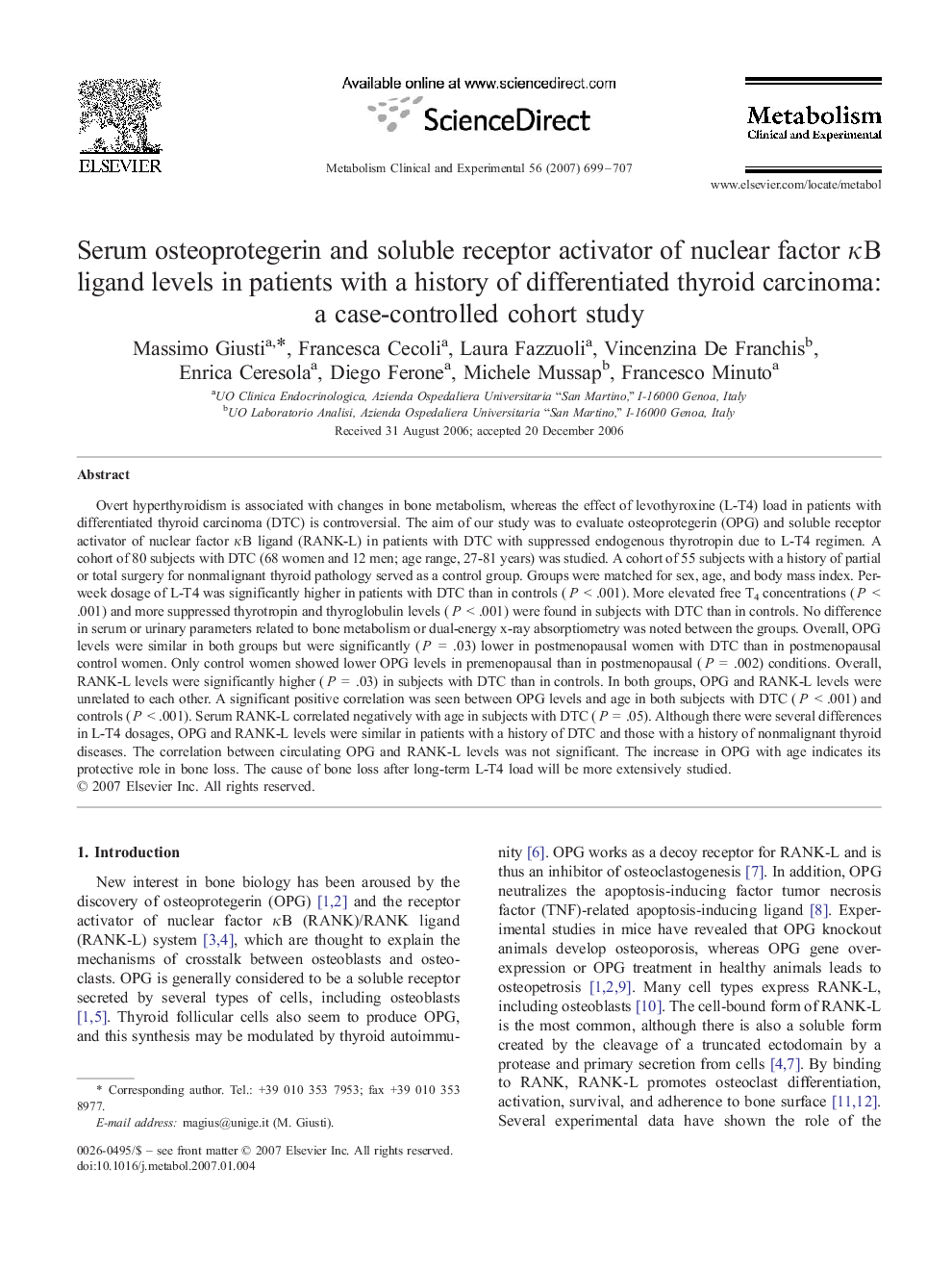| Article ID | Journal | Published Year | Pages | File Type |
|---|---|---|---|---|
| 2807687 | Metabolism | 2007 | 9 Pages |
Abstract
Overt hyperthyroidism is associated with changes in bone metabolism, whereas the effect of levothyroxine (L-T4) load in patients with differentiated thyroid carcinoma (DTC) is controversial. The aim of our study was to evaluate osteoprotegerin (OPG) and soluble receptor activator of nuclear factor κB ligand (RANK-L) in patients with DTC with suppressed endogenous thyrotropin due to L-T4 regimen. A cohort of 80 subjects with DTC (68 women and 12 men; age range, 27-81 years) was studied. A cohort of 55 subjects with a history of partial or total surgery for nonmalignant thyroid pathology served as a control group. Groups were matched for sex, age, and body mass index. Per-week dosage of L-T4 was significantly higher in patients with DTC than in controls (P < .001). More elevated free T4 concentrations (P < .001) and more suppressed thyrotropin and thyroglobulin levels (P < .001) were found in subjects with DTC than in controls. No difference in serum or urinary parameters related to bone metabolism or dual-energy x-ray absorptiometry was noted between the groups. Overall, OPG levels were similar in both groups but were significantly (P = .03) lower in postmenopausal women with DTC than in postmenopausal control women. Only control women showed lower OPG levels in premenopausal than in postmenopausal (P = .002) conditions. Overall, RANK-L levels were significantly higher (P = .03) in subjects with DTC than in controls. In both groups, OPG and RANK-L levels were unrelated to each other. A significant positive correlation was seen between OPG levels and age in both subjects with DTC (P < .001) and controls (P < .001). Serum RANK-L correlated negatively with age in subjects with DTC (P = .05). Although there were several differences in L-T4 dosages, OPG and RANK-L levels were similar in patients with a history of DTC and those with a history of nonmalignant thyroid diseases. The correlation between circulating OPG and RANK-L levels was not significant. The increase in OPG with age indicates its protective role in bone loss. The cause of bone loss after long-term L-T4 load will be more extensively studied.
Related Topics
Life Sciences
Biochemistry, Genetics and Molecular Biology
Endocrinology
Authors
Massimo Giusti, Francesca Cecoli, Laura Fazzuoli, Vincenzina De Franchis, Enrica Ceresola, Diego Ferone, Michele Mussap, Francesco Minuto,
